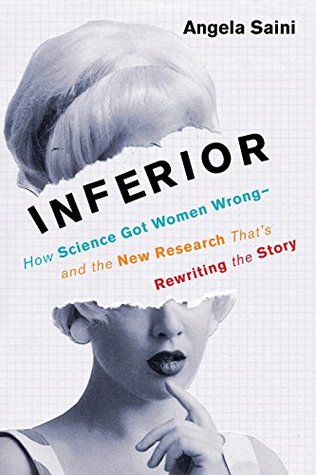More on this book
Community
Kindle Notes & Highlights
by
Angela Saini
Read between
September 17 - December 22, 2019
For centuries, scientists have influenced decision makers on important issues including abortion rights, granting women the vote, and how schools educate us. They have shaped how we think about our minds and bodies and our relationships with each other. And of course, we trust scientists to give us the objective facts. We believe that what science offers us is a story free from prejudice. It is the story of us, starting from the very dawn of evolution. Yet when it comes to women, so much of this story is wrong.
She ends on a furious note. “Let the ‘environment’ of women be similar to that of men and with his opportunities, before she be fairly judged, intellectually his inferior, please.”
like Darwin had, that women can never hope to reach the same intellectual heights as men, however hard they try. “From her abiding sense of weakness and consequent dependence, there also arises in woman that deeply-rooted desire to please the opposite sex which, beginning in the terror of a slave, has ended in the devotion of a wife,” he writes.
People could no longer clearly define the sexes anymore. There was overlap. Femaleness and maleness, femininity and masculinity, were turning into fluid descriptions, which might be as much shaped by nurture as by nature.
a baby girl is statistically more robust than a baby boy. She’s naturally better built to live. As scientists start to explore the female body in truer detail, they are learning just how powerful a girl’s survival edge is—even in a world that doesn’t always want her. “Pretty much at every age, women seem to survive better than men.” We often think of males as being the tougher and more powerful sex. It’s true that men are on average six inches taller than women and have around double the upper body strength. But then, strength can be defined in different ways. When it comes to the most basic
...more
But the reasons could also be more complicated. After all, a baby girl’s natural survival edge stays with her throughout her entire life. Girls aren’t just born survivors, they grow up to be better survivors, too. “Pretty much at every age, women seem to survive better than men,” confirms Steven Austad, international expert on aging and chair of the biology department at the University of Alabama, Birmingham. He describes women as being more “robust.” It’s a phenomenon so clear and undeniable that some scientists believe understanding it may even hold the key to human longevity.
For years, doctors assumed that a woman’s immunity couldn’t be changing during her menstrual cycle. If she did report a difference in pain levels, doctors might dismiss it as premenstrual syndrome or some vague psychological complaint. It was only when these links were increasingly backed up by hard research that scientific interest was sparked and more research began to flourish. This problem runs all the way through research into women’s health. If a phenomenon affects women and only women, it’s all too often misunderstood. And this is compounded by the fact that even though they’re good at
...more
carry their babies while they gathered—and both probably before anyone created stone hunting tools. These are likely to have been the earliest human inventions, she says, and they would have been used by women.
What digging sticks, slings, and food bags all have in common, though, is that they’re wooden or made of skin or fiber, which means they break down and disappear over time. They leave no trace in the fossil record, unlike hardwearing stone tools that archaeologists have assumed are used for hunting. This is one reason, adds Zihlman, that women’s inventions, and consequently women themselves, may have been neglected by evolutionary researchers.
But seen from a different point of view, it also casts the underlying assumptions of Charles Darwin and Angus Bateman in an alternative light. Male sexual jealousy, the fear of being cuckolded, and such vicious mate guarding suggest that females aren’t naturally chaste or passive at all. If they were, then why would their partners go to such extraordinary lengths to stop them getting anywhere near other males?
“Generally, men have never accepted strict monogamy except in principle. Women have been forced to accept it.” From the smallest laws to the most sweeping religious doctrines, she argued, cultures everywhere had tried to burn away every last scrap of female sexual freedom. This subjugation was the root of the moral double standard, the punishments, and the violent brutality that women continue to live with today.
The common thread that unites species in which females are particularly vulnerable to male violence is females being alone.
In patriarchal societies, a woman will almost always leave her own family when she gets married and go live with her husband’s. Losing the support of her relatives makes her especially weak in the face of violence and repression. And this weakness is exacerbated when men form alliances with each other and control resources, such as food and property.
The feminists had destroyed the old image of woman, but they could not erase the hostility, the prejudice, the discrimination that still remained. —Betty Friedan, The Feminine Mystique, 1963
“Man is himself a problem in search of a solution,” he writes. “When men understand that the best way to solve their own problem is to help women solve those that men have created for women, they will have taken one of the first significant steps toward its solution. . . . The truth will make men free as well as women.” It’s a message as timely then as it is now.


